ZZZ Combat Design: Why does "Defensive Assist" switch Agents?
When Zenless Zone Zero first launched, most proxies had a simple idea of what they imagined the division of professions within the game to be based on online gameplay blurbs and strategy content: namely, Stun Agents paired with Attack Agents to deal longer stuns and higher damage.
But why is it that more and more people are admitting that Stun Agents are of little use? What factors are causing the problem? How "Defensive Assist" affect Stun agents? Let's find out together.
1. Basic Design Logic for Attack Agents in ZZZ
When we talk about the action of a game, we're really talking mostly about how the character interacts with the enemies in the game. This includes a lot of things, such as judging when to perform an evasive maneuver based on the enemy's movements.
What we often refer to as counter moves and extreme dodges are obviously a frequent or integral part of action games. These maneuvers usually require the player to be aware of the enemy's movements at all times, so they are usually performed by a single character. However, as a long-running action game, it is inevitable that characters will be updated and sold, which directly leads to the differentiation of roles and responsibilities between characters.

Since there is only one character on the field, it is only natural to have a team composed of Stun+Support+Main DPS. The Stun agent is responsible for interacting with the monster while it is attacking, dodging, and accumulating anomalies. The Main DPS agent is switched when the monster is knocked off-balance to maximize damage output. Background agents tend to be either Support agents or a DPS/ATK agent that is less reliant on standing.
Then we can imagine how to design action modules for different professions. First, let's talk about Main DPS agents that need to deal the most damage. The most basic design solution is to have these agents do sustained output, which is concentrated in the second half of the attack time and is easily interrupted. This would prevent Main DPS characters from dealing maximum damage during enemy actions. Agents in Zenless Zone Zero currently follow this logic.
For example, Corin Wickes, Anton Ivanov and even S-rank Attack character Asaba Harumasa rely heavily on sustained normal attacks to provide cumulative damage. These all fall into the category of only having stronger action modules when attacking Stunned state enemies. While some of the S-rank agents have better output mechanics, their damage is also as long as they focus on sustained output.

For example, Soldier 11's EX Basic Attack's highest damage multiplier is concentrated on the last two, so it can only be fully applied to the enemy in a stress-free output environment. The advantage of the mechanic is that it is possible to use EX Basic Attack even while standing continuously. this naturally grants her the advantage of being able to attack without switching. Which Corin and Anton can't do. However, it's still included in Core Skill: "Deal extra damage to enemies in Daze state". So this proves that the character is still essentially a agent that targets stunned enemies.

However, Nekomiya Mana is not a sustained stand-up agent. Part of her damage increase comes from extreme dodging, so knocking an enemy off-balance will limit her DPS to a certain extent, and for now she's better suited to relay battles with Piper.
2. Why does "Defensive Assist" switch Agents in Zenless Zone Zero?
So after talking about Attack agents, let's talk about Backstage agents. In most games, backstage roles are divided into Support Agents and Assist DPS Agents, whose role is to buff teammates, debuff enemies, or provide shields and healing, and whose DPS is unimportant. Assist DPS is needed to increase damage output.
However, there is no need to make this distinction in ZZZ, and this is because there are a couple of more obvious differences between Zenless Zone Zero and a couple of other games. One is that there are no Survival Bit characters on the team in ZZZ, and it is theoretically possible for a player to make it through the game without injury. While most players can't do this, the agents' Drive Discs in positions 1,2,3 provide basic HP and Defense Master Stats, which somewhat improves the agents' survivability. However, for Main DPS agents, the #4,5,6 drive discs for these characters usually don't come with survival type Stats.

If you're careful, you may notice that often the one who dies the fastest in a fight is the agent who is the Main DPS. So no matter how much you stack the Support agent's HP and defense, there's no point in letting him live alone. From this we can conclude that "Most characters in the later stages should carry a drive disk with a main phrase that increases damage". It also leads to the fact that the gap between Main DPS agents and other agents won't be that big.
The second is that Zenless Zone Zero has a very obvious innovation in its combat mechanics, which is our topic today: "Switching agents when Defensive Assist". I think it's a pretty good design, but of course, because this mode is so innovative it causes many action gamers to be uncomfortable when they get started, so naturally the reviews are polarized. I'll explain the benefits of this design and the problems it solves.
Some relatively hardcore and "flick knife" as a hard demand of the game is required to players can not be greedy, for example, "Sekiro: Shadows Die Twice" in the battle requires the player in the enemy attack the moment to press the block button, if the player is greedy to carry out one more attack will be very likely to lose the opportunity to block. However, many players prefer the feeling of fighting from start to finish rather than waiting for the right moment to block.
This extends to two possibilities:
1. The agent's attack itself can "flick the knife", with a "flick" cast time.
In this case, if the agent doesn't attack too often, it will essentially need to "Defensive Assist" by controlling the tempo of the attack. If the frequency of attacks is too high, then there is no need for any substantial operation at all, you just need to attack all the time. So ZZZ chose another way.
2. Set up a dedicated button for "Defensive Assist", which removes the cast time of the "flick".
This would allow the player to perform their normal output cycle and test their reaction speed through this gameplay, but it seems like the best of both worlds, but it will be difficult to realize. The key thing is how to design the moves for this type of attack with no cast time.

Obviously, it is difficult to let the agent on the field change to Defensive Assist at any time under any action, so if you want to trigger Defensive Assist at any time, you can only bind the agent to switch to make the new character on the field to perform the action of flicking the knife. The key difficulty in realizing this design lies in the camera, and a large number of reasonable camera changes make us feel physically and mentally happy during the battle. This is because the difficulty of this thing is extremely high, which is why many games can not do or discard this program.
Having adopted this difficult scenario, the production team still needed to address two more critical questions: first, "What should be done with the previous standing agent?" ; and Two, "what can the new agent do?"
For the standing agent, ZZZ's way of dealing with it is to have the agent keep attacking after triggering Defensive Assist untill end of the action. This is obviously the more player-acceptable method, and it would definitely be weird if standing characters just disappeared. On the other hand, the more powerful agent attacks usually have multiple damage, so losing the follow up damage by switching agents would be an obvious negative feedback for the player.

This manifestation of switching agents with the previous agent still present is actually what we commonly refer to as "Synchronization", merging the output axes of the agents. Players usually prefer to have characters in their party fighting at the same time, but it's obviously impractical for an action game to have players controlling more than one character at the same time. The "Synchronization" design allows players to briefly feel what it's like to have their squad members fighting side by side.
Each agent in Zenless Zone Zero is capable of "Synchronization", and from time to time you can see two or even three agents present at the same time. That's why the production team needed to make specific settings for each agent's every move, along with camera control, in order to create this handsome and uncluttered battle design.
The next question is: "What can the new agent do when it is switched out?". Many players feel uncomfortable switching agents when they first play ZZZ: after Defensive Assist, they still need to switch back to the original agent to continue outputting, and players may think that the game's guidance is bad because of this. But in fact, after Defensive Assist, players can press the normal attack button to trigger the "Assist Follow-Up" to attack the monster directly, so there is no need for any evasive maneuvers to switch proxies in a smooth manner.
As we mentioned earlier, ZZZ requires all agents to be in the "High DPS" direction, so no matter which agent does the "Assist Follow-Up" damage in the late game, it's a great way to fill up the time you have to stand still during the daze period.

Overall, under the Zenless Zone Zero combat mechanic, each character's contribution will be relatively close to each other. While each character has their own specialties, they can always make up for some of the other parts as well. For example, Ellen is an Attack agent but can usually stand alone for damage output. This also allows the game's subsequent character designs to work more on mechanics. By increasing the functionality of the characters to increase their strength, the game's value inflation itself will be slower. This is the advantage that the Defensive Assist mechanic brings to ZZZ, and it's why I really appreciate this innovative gameplay.
3. Do Stun agents actually useful now in ZZZ?
So let's answer the question we posed at the very beginning: why is it so common for players at this stage to think that Stun agents are of little use?
There are a number of reasons for this, one of which is that the enemies we're currently facing generally don't give Agent Stun much time to stand still, and most of the bosses the player encounters at this stage are generally more aggressive and can be countered by "Defensive Assist". In higher difficulty fights, the player is almost ready for a second yellow flashlight after the enemy's yellow flashlight and Defensive Assist, which doesn't give Stun Agent much time to keep outputting. Stun Agents are inherently ineffective at this pace of action. In the future, if there are more bosses with a low desire to attack or bosses that are difficult to Defensive Assist, the value of Stun Agents will increase greatly.

The second is that Stun agents require an extremely high attribute base. In the same combat, Stun Agents are affected far more than other agents, and this is mainly reflected in the threshold of attributes.
Stun Agents have a very high requirement for their Impact attribute, which determines to a certain extent whether or not a Stun Agent can Stunned an enemy in a single skill cycle, and this plays a decisive role in a battle. Whether or not you can make up for the missing Daze value during Defensive Assist is also qualitatively important; if you can't put the enemy into Daze, you might as well have the Attack Agent perform another Defensive Assist.
Stun efficiency is not only related to Impact, but also to agent level and skill level. So when Stun Agents have low Attributes, it is very difficult to engage in high level combat.
Of course, Zenless Zone Zero still gives Stun Agents a lot of time to output, but it depends on whether your Stun Agent's attributes are sufficient. That's why Stun Agents in the later stages are sure to rise in value.

Stun efficiency is not only related to Impact, but also to agent level and skill level. So when Stun Agents have low Attributes, it is very difficult to engage in high level combat.
Of course, Zenless Zone Zero still gives Stun Agents a lot of time to output, but it depends on whether your Stun Agent's attributes are sufficient. That's why Stun Agents in the later stages are sure to rise in value.
This is all about "Defensive Assist", we have extended the discussion on how "Defensive Assist" affects Attack and Stun agents, and we are sure that this content will help you to progress faster!
Zenless Zone Zero Official Figure
- $99.90
- $99.90
- Unit price
- / per
- $129.90
- $129.90
- Unit price
- / per
- $286.90
- $286.90
- Unit price
- / per
- $54.90
- $54.90
- Unit price
- / per
- From $39.90
- From $39.90
- Unit price
- / per
- $139.90
$159.90- $139.90
- Unit price
- / per
- $316.90
- $316.90
- Unit price
- / per
- From $29.90
- From $29.90
- Unit price
- / per
- $139.90
- $139.90
- Unit price
- / per
- $139.90
- $139.90
- Unit price
- / per
- $119.90
$135.90- $119.90
- Unit price
- / per
- $286.90
- $286.90
- Unit price
- / per
- From $75.90
- From $75.90
- Unit price
- / per
- $135.90
- $135.90
- Unit price
- / per
- $286.90
- $286.90
- Unit price
- / per
- $54.90
- $54.90
- Unit price
- / per
- $129.90
- $129.90
- Unit price
- / per
- $129.90
- $129.90
- Unit price
- / per
- $399.90
- $399.90
- Unit price
- / per
- $38.90
- $38.90
- Unit price
- / per
















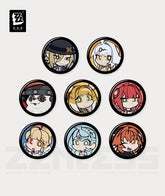





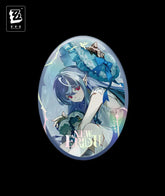





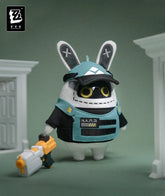

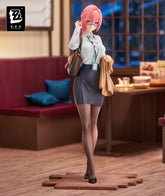



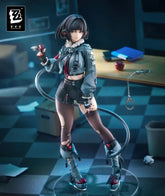

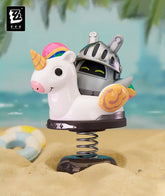



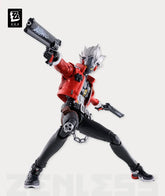





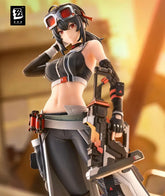

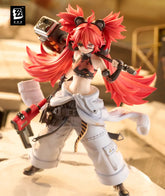

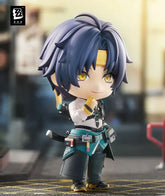

![[Official Merchandise] Zenless Zone Zero Ellen Joe 1/7 Scale Figure](http://141store.com/cdn/shop/files/ELlen-joe-figure_282b9cc4-8e7e-40ef-a893-dbf6e711d43a_165x.jpg?v=1751701116)
![[Official Merchandise] Zenless Zone Zero Ellen Joe 1/7 Scale Figure](http://141store.com/cdn/shop/files/ELlen-joe-Shark-girl-figure_165x.jpg?v=1751701116)
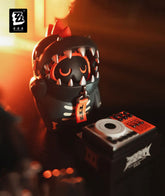

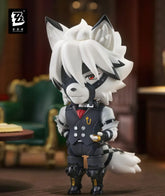

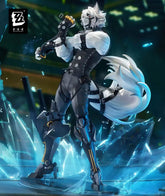

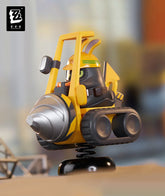

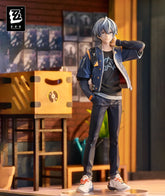

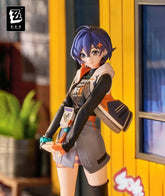



![[Official Merchandise] Zenless Zone Zero Bangboo Standee Miyaboo, Asaboo & Soukaboo Toy Keychain](http://141store.com/cdn/shop/files/ZT01_03664ab7-3c63-4305-96aa-030ae64500bd_165x.jpg?v=1740556010)
![[Official Merchandise] Zenless Zone Zero Bangboo Standee Miyaboo, Asaboo & Soukaboo Toy Keychain](http://141store.com/cdn/shop/files/ZT02_9fff902b-f933-4cc6-b2bf-bd39f1a23b5c_165x.jpg?v=1740556010)
